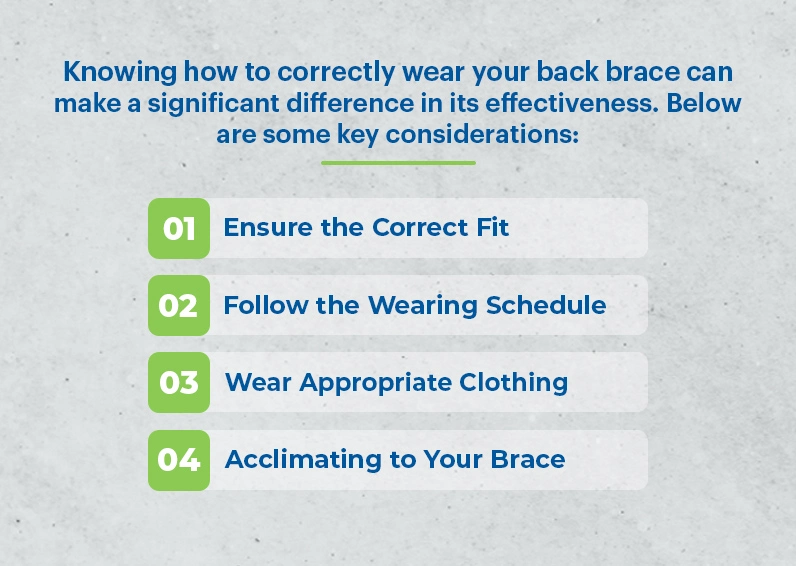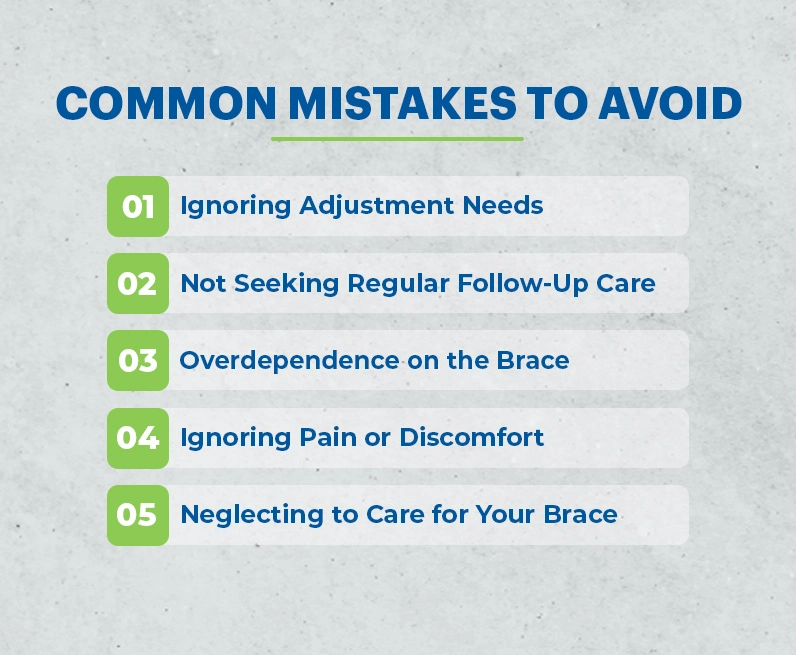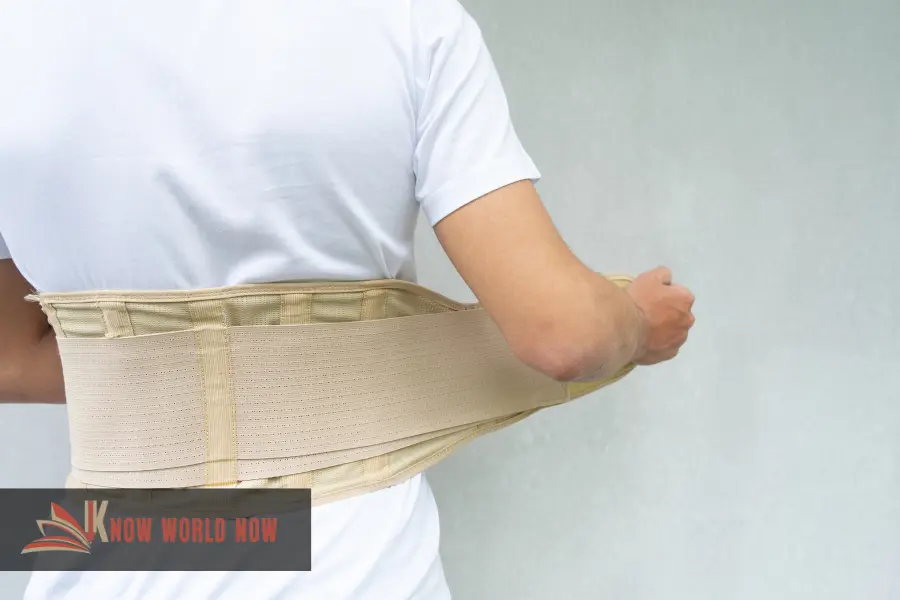A back brace can be a vital tool in managing and alleviating back pain. It can improve posture, provide essential support, and foster the healing process. However, to maximize its benefits and ensure its longevity, it’s crucial to understand how to properly wear and care for your back brace. This article offers a comprehensive guide on these aspects, ensuring you get the most out of your back brace.
Understanding the Purpose of a Back Brace
Before we delve into the specifics of wearing and caring for a back brace, let’s first understand its purpose. Back braces are designed to help manage conditions that cause back pain, like herniated discs, sciatica, and osteoarthritis. They offer support to the spine, restrict potentially harmful movements, and correct posture, thereby reducing pain and promoting healing. However, the efficacy of a back brace is largely dependent on how well it’s used and maintained.
Properly Wearing Your Back Brace
Knowing how to correctly wear your back brace can make a significant difference in its effectiveness. Below are some key considerations:

1. Ensure the Correct Fit
The foremost step in wearing your back brace correctly is ensuring a suitable fit. A brace that doesn’t fit appropriately might fail to offer the required support, resulting in inadequate pain relief. Worse, it could cause discomfort or even worsen your condition. When you first receive your brace, your healthcare provider or orthotist should adjust it to fit you properly. They’ll provide guidelines on the degree of tightness it should have and how to adjust the straps for optimal support.
2. Follow the Wearing Schedule
Your orthotist or doctor will provide a wearing schedule based on the type of brace you have and your specific condition. Some braces are designed for all-day wear, while others are intended to be worn only during certain activities or for specific periods. It’s crucial to follow this schedule closely to allow the brace to effectively alleviate your back pain and support healing.
3. Wear Appropriate Clothing
It’s advisable to wear a thin layer of clothing between your skin and the brace. This layer prevents chafing and irritation that could result from the brace rubbing directly against your skin. Ideally, this clothing should be tight-fitting and made of moisture-wicking fabric to ensure your comfort, especially in warmer weather.
4. Acclimating to Your Brace
Adjusting to a back brace can take some time. Initial discomfort is normal as your body adapts to the additional support. However, persistent discomfort or pain isn’t normal and should prompt a visit to your healthcare provider.
Caring for Your Back Brace
Back braces require regular cleaning and maintenance to keep them in optimal condition. Here’s how you can care for your back brace:
1. Regular Cleaning
Regular cleaning is a must to maintain your brace’s functionality and to keep your skin healthy. Most braces can be cleaned with mild soap and warm water. Rinse the brace thoroughly to remove all soap, and then let it air dry. Avoid harsh detergents, bleach, and fabric softeners, as these can degrade the brace’s materials and potentially irritate your skin.
2. Inspection for Wear and Tear
Regularly inspect your brace for signs of wear and tear, which may include stretched straps, broken fasteners, or worn padding. If you notice any damage, don’t attempt to repair it yourself. Instead, contact your healthcare provider or orthotist to discuss repair or replacement options.
3. Proper Storage
When not in use, your brace should be stored in a cool, dry place out of direct sunlight. Heat can warp the brace, and both heat and sunlight can degrade the materials from which the brace is made.
Read More: The Importance of Wearing a Back Brace Post-Surgery
Common Mistakes to Avoid
Several common mistakes can decrease the effectiveness of a back brace and may even cause harm. Here’s what to avoid:

1. Ignoring Adjustment Needs
As your body changes due to weight loss, gain, or muscle development, your brace might need adjustments. If you notice that your brace has become too tight or too loose, don’t ignore it. Contact your healthcare provider to get it adjusted. An improperly fitting brace won’t provide the support you need and could even cause harm.
2. Not Seeking Regular Follow-Up Care
Regular follow-up appointments with your healthcare provider are essential. They can check the fit of your brace, make any necessary adjustments, and address any concerns or issues you may have. These check-ins ensure that your brace is still serving its purpose effectively.
3. Overdependence on the Brace
While a back brace can provide much-needed support and pain relief, it’s not a cure-all. Over-relying on your brace and neglecting prescribed exercises or physical therapy can lead to muscle atrophy. Use your brace as a part of your overall treatment plan, not as the sole solution.
4. Ignoring Pain or Discomfort
Some discomfort is normal when you first start wearing a back brace as your body adjusts to the added support. However, ongoing pain, swelling, numbness, tingling, or skin changes are not normal. If you experience any of these issues, stop using the brace and contact your healthcare provider immediately.
5. Neglecting to Care for Your Brace
Regular cleaning and inspection of your brace is essential for its functionality and longevity. Failing to properly care for your brace can lead to skin irritation, discomfort, and reduced effectiveness.
Lifestyle Adjustments: Living with a Back Brace
Wearing a back brace might require you to make certain lifestyle adjustments. This is because a brace can restrict your movement and change the way you perform daily activities.
1. Sitting
You might need to adjust your seating position to ensure that your back brace provides maximum support. For example, try to sit up straight with your feet flat on the floor, and avoid slouching or leaning forward too much.
2. Sleeping
Getting a good night’s sleep with a back brace can be challenging at first. You might need to adjust your sleeping position or use extra pillows for support. It’s best to follow your healthcare provider’s recommendations.
3. Exercising
It’s crucial to maintain an active lifestyle, even with a back brace. However, some types of exercise may be more suitable than others. Low-impact activities like walking or swimming can be beneficial but always consult with your healthcare provider before starting a new exercise regimen.
4. Dressing
Wear thin, tight-fitting clothes under your brace to prevent skin irritation. Choose fabrics that wick moisture away from the skin to keep you comfortable.
Conclusion
In conclusion, wearing a back brace correctly and taking care of it are integral aspects of your back pain management plan. Remember, a back brace is an adjunctive tool, not a standalone solution. It works best when used in conjunction with a comprehensive treatment plan, including physical therapy and exercise.
It’s essential to maintain regular communication with your healthcare provider to ensure you’re using the brace effectively and addressing any issues that arise promptly. With proper use and care, a back brace can be an effective tool in your journey toward a pain-free life.
Artik Medical Supply’s back braces feature adjustable compression systems and are available for lower and mid-back support. If you’re not sure what product is right for you or if you’re eligible for insurance coverage, Artik Medical Supply will provide the guidance you need. They can even communicate with your doctor to determine the best back brace for you. Contact them today to check for insurance coverage.







